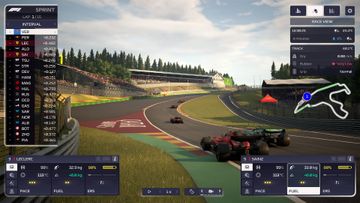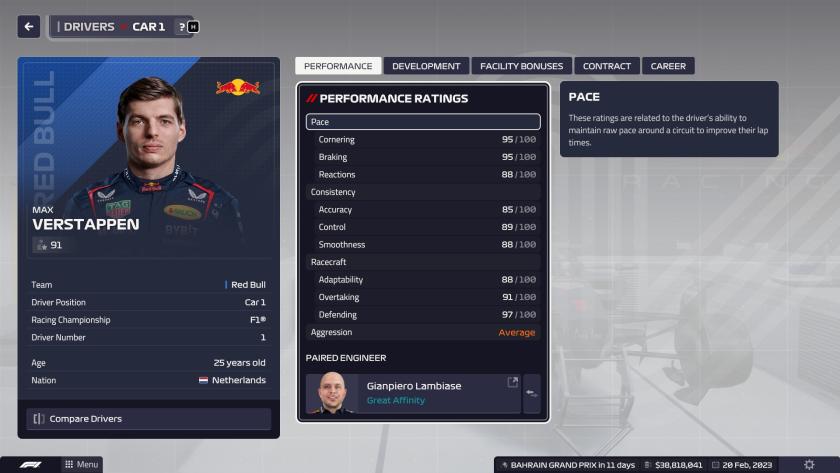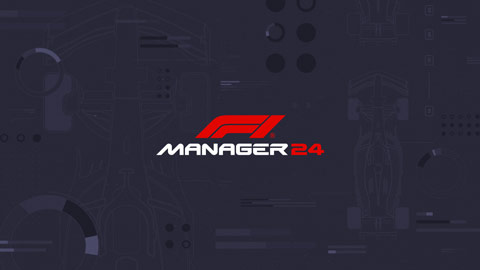
F1® Manager 23 Beginner’s Guide
An introduction to all of your duties as the new Team Principal of an F1® organisation, from race preparation to keeping the board happy.
As a new Team Principal in F1® Manager 23, your first day of the season can be a lot to take in. After all, you’re in charge of race day strategy, engineering a competitive car, hiring and developing staff, and keeping the board and sponsors happy. This F1® Manager 23 Beginner’s Guide will talk you through your primary duties as Team Principal and set you up for your first season of F1®.
Preparing for races

There are 23 Grands Prix in each season of F1® Manager 23, and it’s down to you to prepare race strategy ahead of the event and lead your drivers on race day.
You can find detailed information about each upcoming Grand Prix on the Circuits window, including track abrasiveness – which determines how quickly your cars’ tyres wear down – and which attributes of your cars’ design will be most important in the race. Some circuits favour cars with greater downforce, such as the tight turns of Monaco, while others benefit cars that can produce the highest top speeds, like the long straights of Spa-Francorchamps. The circuit information is vital in composing a strategy for each race, and mastery of the material will set you up for a good performance at the event.
Leading on race day
F1® race weekends contain three distinct phases – practice, qualifying, and the race itself – and you play an essential part in each.

In practice sessions, your drivers learn every corner and straight of the circuit and offer feedback on the car to the engineering team. Every car in F1® needs to be balanced to suit the track it’s racing on, and by adjusting the setup for your driver, you can increase their confidence in the machine, improving their performance in the upcoming race.
For more information on balancing your car, read the F1® Manager 23 Setups guide.
In qualifying, your drivers set the fastest lap time they can, determining their starting place in the race. In the first stage, only the fifteen fastest drivers make it through; in the second, only the top ten; and, in the third stage, the final ten drivers compete for their place on the starting grid. Your choices in qualifying can mean the difference between starting in pole position or at the back of the grid.

The final stage of each Grand Prix is the race itself. Before you begin, you can make the final adjustments to your car and set a strategy for your drivers to follow in the race. When picking a strategy, you can see what types of tyres the driver will use in each stage of the race and what lap they are likely to be worn out by. Still, you must be ready to respond to on-track changes like crashes, safety cars, and changing weather – making intelligent choices to unexpected events can get you a place on the podium.
While you aren’t directly behind the wheel of the car in F1® Manager 23, you can give instrumental instructions to your drivers. You dictate their moment-to-moment tactics throughout a race, telling them when to go on the attack, conserve their fuel, and pit their car. Picking the right moment to push can secure your drivers’ race-winning leads, but poor instruction can leave them with worn-out tires, empty fuel tanks, and depleted batteries.
Mastery at each phase of a race weekend will see you well on your way to winning the Constructors’ Championship.
Developing a championship-worthy car

The cars your drivers race in the final Grand Prix will differ radically from those that begin each F1® season. Over the months of events, your engineers can develop new components for your cars, making significant improvements to attributes such as top speed, DRS efficiency, and engine cooling, all of which raise performance on the track. As Team Principal, you direct this development, creating a race-winning car.
Between races, you can analyse your cars’ performance to see how its attributes stack up against the competition. For instance, if your car lacks low-speed cornering, you can assign engineers to design a new front wing that will close the gap on your rivals.

With each part, you can give your engineers granular direction on what attributes to prioritise, such as speed gains over downforce generation, and you can spend a little extra to rush through the development of the new component.
It’s not only your cars you will want to improve across the season; you can also upgrade your team’s facilities, such as its wind tunnel and race simulator. Your investments can be rewarded with gains in component testing, faster driver training, and higher team morale, all of which will improve your performance on the track.
Fostering talent
A racing team would be little without its drivers, so you will need to pay as much attention to the development and needs of your talent as you do your car if you want to succeed in F1® Manager 23.
The Drivers window shows everything you need to know about the people behind the wheel of your car. Here you can view their overall ability as a single score, along with a breakdown of the attributes that inform it, such as cornering, braking, and defending. Each of those scores determines how they behave on the track. If you spot a weakness in their skillset, you can set a development focus for your drivers that will see them work to improve their attributes throughout the season. The younger they are, the faster they will develop their skills.

The Drivers window also shows your driver’s morale and their affinity with their Race Engineer – the staff member who talks to them over the radio throughout each race. A driver with high morale has more confidence in races and is more likely to sign a new contract with your team.
On the track, the drivers’ psychology comes into play: you will build their confidence across practice sessions by giving them time to learn the circuit, get familiar with the parts fitted to their car, and, most importantly, tweak their setup to match their needs. A driver with higher confidence will be quicker and more consistent. Besides keeping your car competitive, the best preparation for race day is to keep your drivers happy and confident.
For more information, read the F1® Manager 23 Drivers guide.
Supporting staff

It takes a village to make a successful F1® team, not just a competitive car and top-tier driver; you need a talented support team to do well across the season.
Heading up car development is your Technical Chief and Head of Aerodynamics. Their character attributes determine the statistics of each new part you develop for your cars; the higher their skills, the better the stats of your new components.
Your team’s two Race Engineers are the primary contacts for your drivers when they’re out on the circuit. Keeping in constant communication over the radio, Race Engineers take feedback from the drivers to tweak setups during practice, tell them when they need to pit, and it’s the engineers’ cool heads that bolster the drivers’ confidence after adverse events like being overtaken or locking up on a turn.
Finally, the Sporting Director is in charge of your pit crew. They develop the training schedule for your trackside team, drilling them to speed up pit stop times and reduce the chance of mistakes that can delay your drivers returning to the track.
You can develop each member of staff to improve their skills. For example, training your Race Engineers to be better communicators, reducing the time it takes for drivers to deliver feedback on their car’s setup, or pushing your design chiefs to become better engineers to improve the stat increases on the new parts they design.
For a closer look at managing your team, read the F1® Manager 23 Staff guide.
Keeping the money happy
While your focus is preparing for each Grand Prix in the season, as Team Principal, you ultimately answer to the board and your team sponsors. Keep them happy and you will have a long career.

The board will set a target for each season and a long-term goal for where they would like you to take the team. For instance, they may want you to achieve second place or higher in the Constructors’ Championship in the 2023 season and win the competition in the 2024 season. Achieving these targets, or even just making meaningful progress toward them, will keep the board on side.
Keeping team sponsors happy is also crucial for your success across a season. As well as paying you a set amount for competing in each race, sponsors will offer you bonuses for guaranteeing specific achievements in an event. For instance, you can tell a sponsor your drivers will attain pole position in qualifying. Success means an additional lump sum to fund component development, extra money for staff contract negotiations, or the cash you need to upgrade your morale-boosting trophy room. However, failing to keep your promises will reduce the amount a sponsor pays you after race day.

This Beginner’s Guide is just an introduction to your duties as Team Principal in F1® Manager 23. You may still find your first season in charge a little daunting but remember, an F1® season is a marathon, not a sprint. A single race won’t secure your success or failure in the Constructors’ Championship. Learn from your losses, study your opponents’ wins, and develop your car, drivers, and staff to cover your weaknesses and extend your strengths.
F1® Manager 2024
Lead your team to glory in F1® Manager 2024. Build a legacy with one of 10 official F1® constructors or create your very own team.









